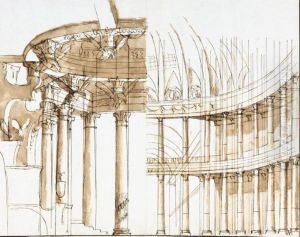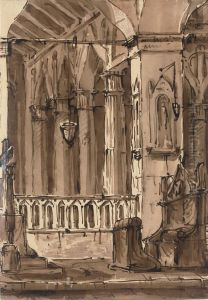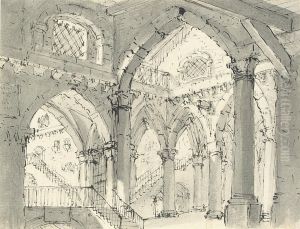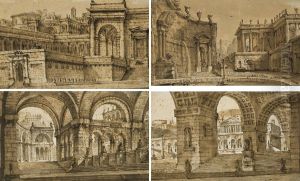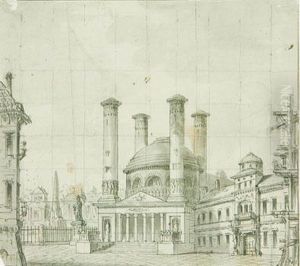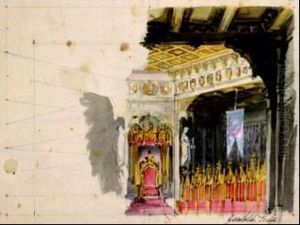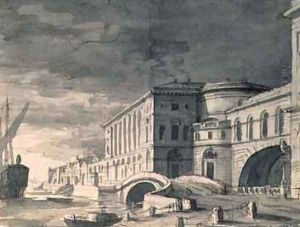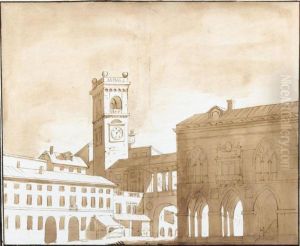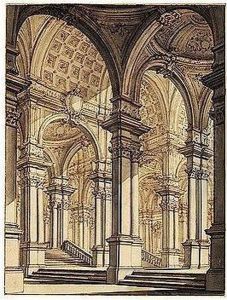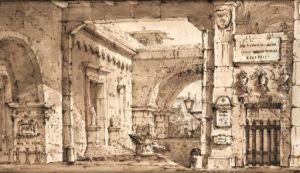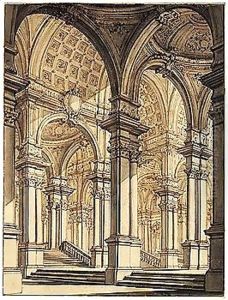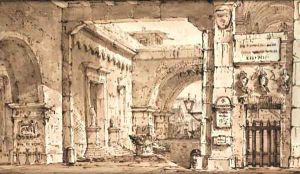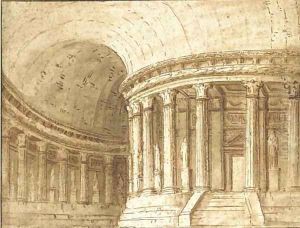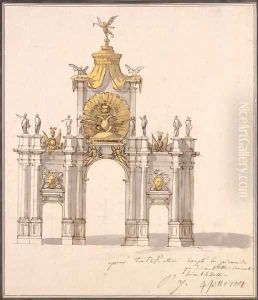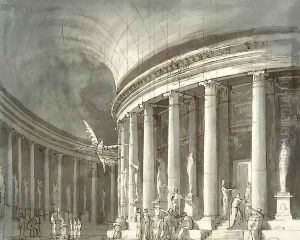Pietro Gonzaga Paintings
Pietro Gonzaga was an Italian scenographer, painter, and decorator, renowned for his contributions to the transformation of stage design in the late 18th and early 19th centuries. Born in Longarone, which was then part of the Republic of Venice, Gonzaga demonstrated an early talent for art, leading him to pursue a career that would eventually earn him recognition across Europe.
Gonzaga's early works were influenced by the Baroque tradition, yet he soon developed a distinctive style characterized by its dramatic use of perspective and lighting, which was particularly suited to the theatrical stage. His innovations in stage design were not merely aesthetic; they also involved technical advancements that allowed for more complex and dynamic scenery changes, enhancing the overall theatrical experience.
In 1779, Gonzaga's career took a significant turn when he was invited to Russia by the Empress Catherine the Great. He worked in St. Petersburg, where he became the chief designer for the Imperial Theatres. In Russia, Gonzaga's work reached new heights. He designed sets and costumes for operas and ballets, leaving a lasting impact on Russian theatrical traditions. His designs for productions such as Cimarosa's 'Il matrimonio segreto' and Mozart's 'Le nozze di Figaro' were particularly celebrated.
Despite his success, Gonzaga's time in Russia was not without challenges. His tenure coincided with a period of intense political and social change, including the tumultuous reigns of Catherine the Great's successors. Nonetheless, Gonzaga maintained his position and continued to innovate, contributing to the evolution of Russian stage design well into the 19th century.
Pietro Gonzaga's legacy is marked by his profound influence on the visual aspects of theater. His work bridged the gap between the Baroque and Neoclassical styles, incorporating elements of both while introducing new techniques that would pave the way for modern scenography. Gonzaga died in 1831, leaving behind a body of work that continues to be studied and admired for its artistic and historical significance.
